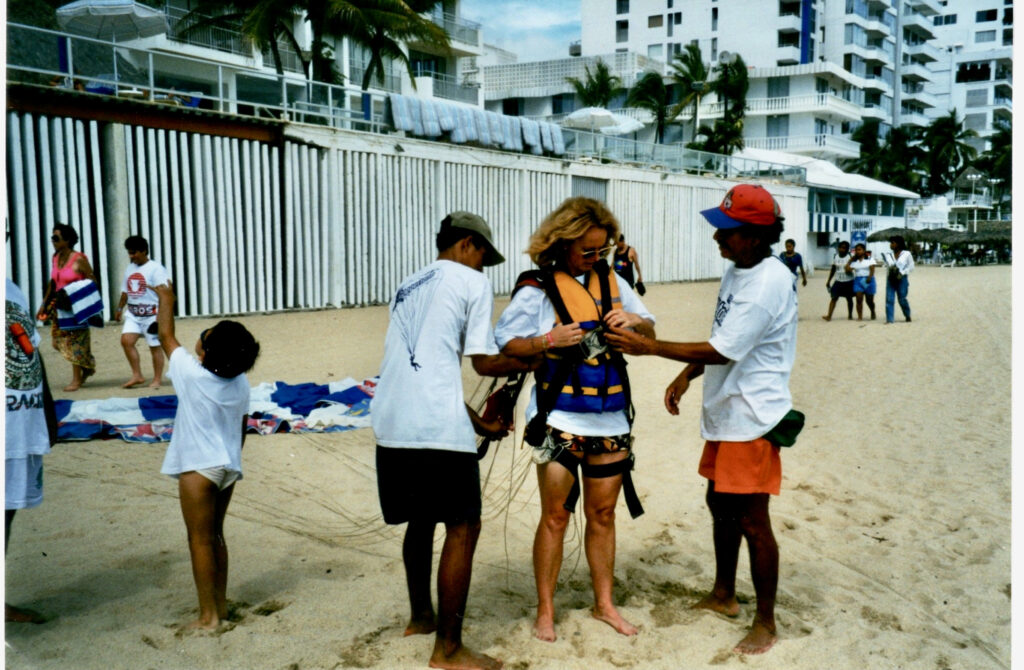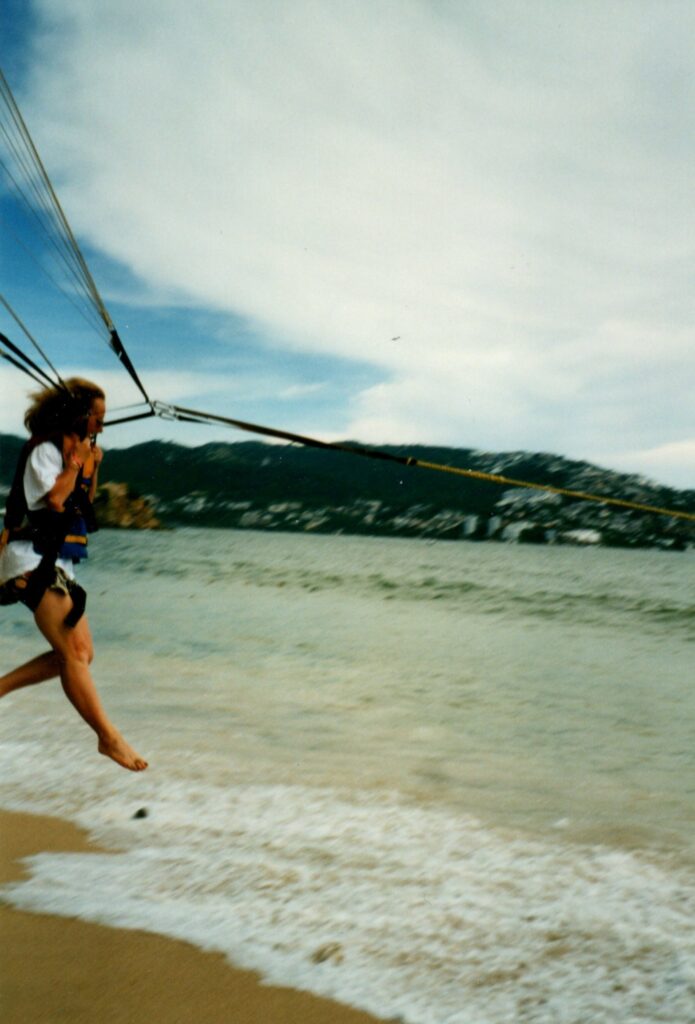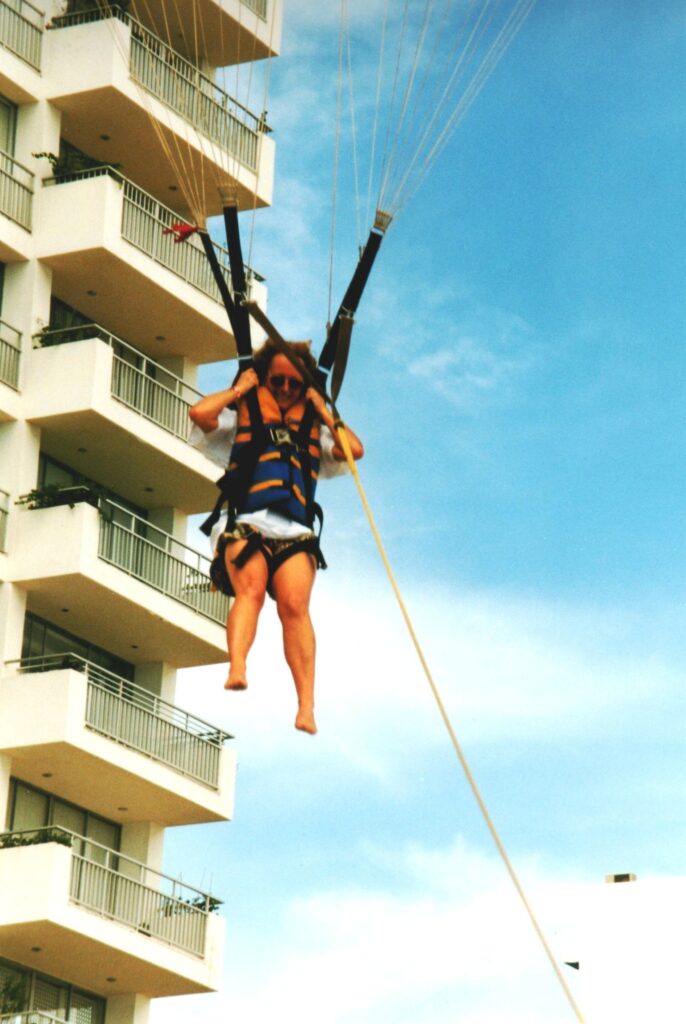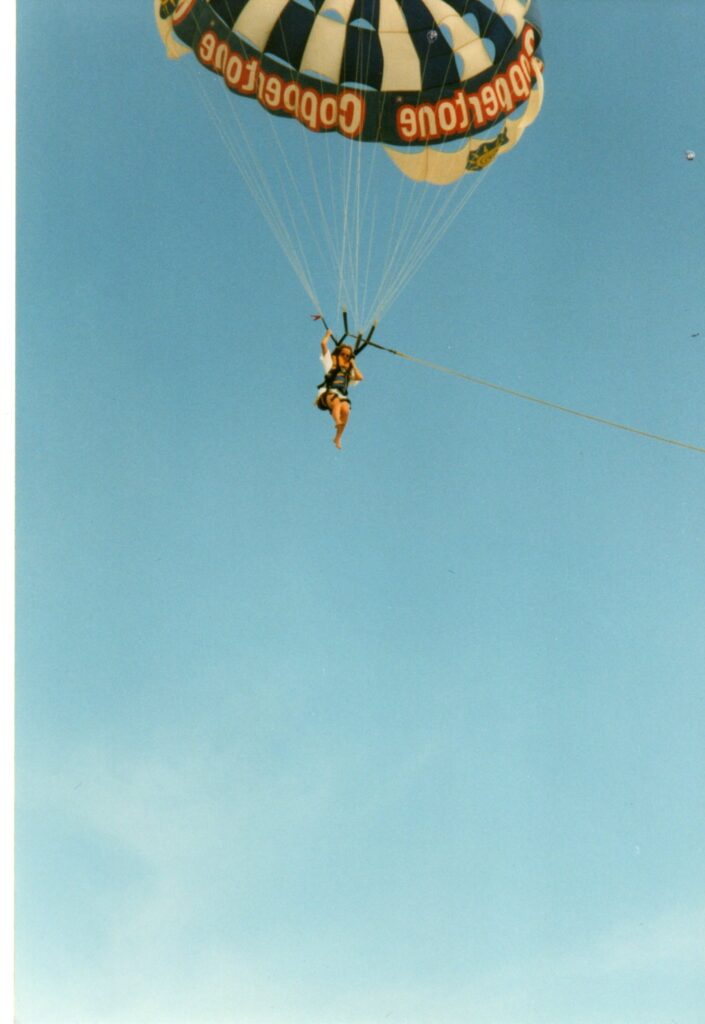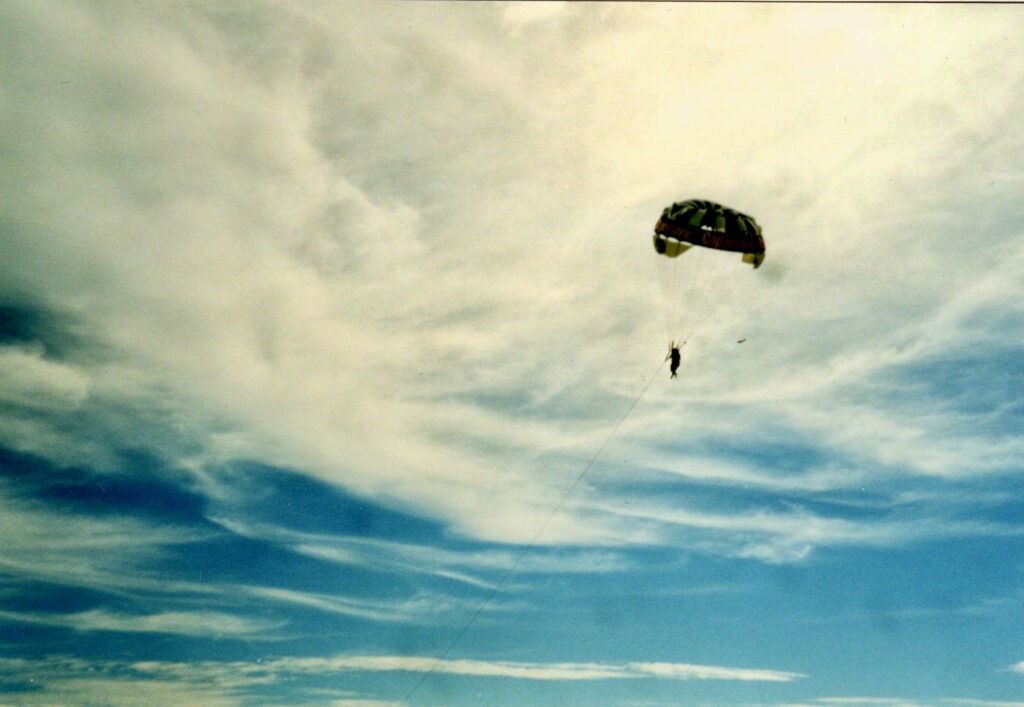“No special skills needed,” the young man says. Never mind that I’ll be ‘sailing’ 200 meters up in the air, suspended to a parachute, and connected by a rope to the boat that will pull both the parachute and me—so we stay up over the Bahia de Acapulco.
After watching people parasail for a couple of days, I thought it would be a cool way to celebrate my birthday while in Mexico. On that glorious August day, I had the choice between taking off from the beach, in front of the Holiday Inn Holiday Resort in Acapulco, or from a platform in the water, at some distance from the shore. Starting on my two steady feet seemed like the best option, I chose the sand.
Airborne Like a Kite
I am next in line and yet I have an unpredictable fear of heights. On the positive side, the man who took off ten minutes ago just landed safely. “How was it?”—I have to ask. “I’d let my grandmother go for it,” he replies, his face beaming from the adrenaline rush.
It’s my turn to get harnessed and I ponder the parachute laying on the sand like a giant deflated balloon. And the life jacket too. At the time, I wasn’t aware that, in the United States, the National Airport System regulates parasailing under “moored balloons, kites, unmanned rockets, and unmanned free balloons.” More than that, I didn’t even question the operator’s qualifications because I assumed that the activity was monitored by the resort. I never found out whether it was, or not.
“When it’s time to land, pull the red trigger when we wave at you, ok?” His English is clear. I follow the instructions, running toward the water, and I am airborne before my fourth step. As I ascend, I don’t dare turn my head or look down until I level out and remember to breathe. Silence envelops my weightless body, and I become awesomely calm. Yes, I feel somewhat like a bird although I wouldn’t dare flap anything.
I finally relax, taking in the perfect view of the arched, and once-pristine, Acapulco coast—famous for the daring divers of La Quebrada cliff. A gentle breeze nuzzles my face and time stops as if I belong in the air. Only when the white stretch of hotels along the beach gets closer and closer do I look down. Raised arms are vigorously waving up at me. The red trigger! Then, the crew on the beach pulls the rope—lowered by the reduced speed of the boat—and brings me toward the sand. And I land in the arms of my welcome-back squad.
Parasailing is Serious Fun
There are a few things to know before parasailing. The first is that the activity is not officially regulated. There are rules, but “no dedicated regulations applicable to parasailing equipment or flight,” the U.S. Coast Guard warns. Yet, in the United States, some two million people do this every year. But thanks to better equipment (at least in the United States) fatalities are rare, but injuries happen.
And so, they are a few precautions to take. First, a serious operator will post proof of inspection by the Coast Guard. If you don’t see any, ask for the operator’s permit and insurance. Better yet, never hesitate to ask a ‘stupid’ question. The answer might help you determine whether the operation is too shady to be trusted.
We all know that zero risk doesn’t exist. In parasailing, a rope might snap and send the flyer to power lines, trees, or buildings. A boat engine might stall and cause the flyer to plunge into the water and be stuck under the parachute. Flyers who take off from a boat might bump the edge of the boat, or be dragged into the water.
To put all safety considerations on your side, always check with the National Weather Service. And do not do this after a few cocktails!
Note
- Parasailing flights and Safety Rules
- U.S. Coast Guard – Flight Safety and Rules
- Watersport Industry Association
First published 2012 Buckettriper.com

